For those who have enjoyed Craig Weightman’s thought-provoking and inspiring monthly features, this book collates his collective wisdom and philosophy, taking you on a fascinating ‘journey in stone’.
Over the next months, we will feature select extracts from ‘A Journey in Stone’ – if you enjoy these, please support Craig’s work by buying a copy.
“This book is the result of years of exploration by myself since I joined the Order of Freemasons in 2004. After following an identical story to the one expressed at the beginning of this preface, I found the process of initiation a truly transformative process.”
Craig Weightman.
A Journey in Stone
Edited and abridged from Chapter 4 – The Working Tools of the Second Degree
The Second Degree in Freemasonry is called the Fellow Craft Degree. If the First Degree is about initiation into Freemasonry, then the emphasis of the Fellow Craft Degree is about living the Masonic life, but what exactly does this mean?
As we have previously discussed, Freemasonry is all about personal change into a person who is able to give more of themselves in life.
In order to do this, Freemasons need to craft themselves using the techniques implied by the first set of working-tools.
However, crafting oneself with tools of change is not sufficient on its own: the Mason also constantly needs to ensure that they are moving towards their final goal as they craft.
In order to do this, care needs to be taken to make sure that the self-crafting Initiate is constantly measuring their progress to see if they are deviating at all from the path they wish to follow.
Operative stonemasons, who would work on stone with chisels and gavels, needed to ensure they were continuously measuring how the stone was changing shape so they could determine how close they were getting to the finished product.
The ultimate goal for the stonemason was to create a smooth ashlar, i.e. a block of stone that is perfectly cuboid in shape.
This meant that the edges of the smooth ashlar had to be perfect ninety-degree angles, and the sides to be perfectly smooth, so that it could fit together exactly with the other ashlars that would go into making the building.
In order to ensure that their work was progressing in the right direction the stonemasons would employ three main tools of measurement, namely the square, level, and plumb rule, and it is these, which comprise the working-tools of the Second Degree in Freemasonry.
In this chapter, then, we will see how each of these tools of the operative fellow craft stonemason can be interpreted symbolically in order for the Freemason to measure their progress on their journey of personal transformation.

The Square
The first of the Second Degree working-tools is the square. This tool is utilised to ensure that corners and edges of an ashlar block being worked upon are right-angles, i.e. angles of ninety degrees.
The square, then, is a tool that is continuously set at ninety degrees so that it can be pressed up against a workpiece to see if it fits the template.
In speculative Freemasonry, the square denotes morality and, in many ways, this concept has fed into everyday usage.
For instance, the morally correct thing to do in any given situation is often called the ‘right’ thing to do, a term that can be seen to come from Masonic origins when we understand how the ninety-degree right-angle can be seen to represent morality.
There are many other common phrases that show how the square represents morality, such as getting a square deal, squaring off, everything being all square, and so on.
In Freemasonry, the Mason is encouraged to act with other people ‘on the square’, which means to act with them firmly in balance and in fairness.
In essence, this is to act with the Golden Rule of doing to others as we would have them do to us, which is a very straightforward way of ensuring that our behaviour is honourable towards others.
If we would not like something done to us, no matter what it might be, we perhaps shouldn’t do that same thing to other people
Compassion also comes into the lesson of the square. The term ‘square’ essentially means to be equal-sided.
As we learn that everyone around us is essentially the same as us, we can understand that these humans feel roughly the same as us in similar situations.
The Freemason, then, through understanding their equality with others, is invited to reach out in assistance to his fellow human and to alleviate any potential suffering they might see occurring, informed by their assessment on how such a situation would make them feel.

The Level
Since we have mentioned equality, now is a good time to move on to the next working- tool in the Fellow Craft Degree, which is called the level.
In operative masonry, the level is a tool that enables the stonemason to ‘prove horizontals.’ In other words, the stone-worker uses the level to make sure that the stone surface they are working on is perfectly horizontal, or level.
Clearly, this is a very important concern when constructing the elements of a building. If each of the stone blocks that are to comprise the building are not level then the building itself will not be level, and the whole structure would be in danger of collapsing.
In speculative Freemasonry, the property of being level is seen to represent equality. Every human being is considered equal, which means that we are all partakers of the same essential facts of life.
All of us are born into a world filled with joy, sorrow, pleasure, pain, abundance, lack, health, sickness, abundant life, and death.
Regardless of who we are, or what we can do, we all get sick, feel pain, feel loss and sorrow and, eventually, must face death.
However, the fact that we are all subject to the ups and downs of life is quite often forgotten because we are all presented with the evidence that lies all around us that people are not equal.
There are very wealthy people in the world who seem to be able to enjoy every good thing that the world can offer.
Some people are born into this world with privilege and financial security, whilst others receive it through luck and others through the results of their own endeavour.
By contrast, there are people who are without homes and are forced to live in the cold, and people who don’t know where their family’s next meal is coming from. Clearly, from a financial perspective, people are by no means equal.
In essence, the lesson of the level is one of perspective and an adjustment of a person’s perspective.
Each of us, no matter who we are, are on our own personal journeys through life.
None of these journeys is identical, but the simple fact that we have all been cast into life without any clue as to what it is all about, and will all face our own challenges and triumphs, is exactly what every human being has had in common with all others throughout all of human history.

The Plumb Rule
The final working-tool associated with the Second Degree, or Fellow Craft, is the plumb rule.
As a tool for the mediaeval stonemason, this was used to ensure that when stone blocks were placed onto their bases in the construction of a building they could be proved to be
perfectly upright or perpendicular.
If this were not the case then the edifice being built would more than likely lean, succumb to the effects of gravity and fall down.
From the moral perspective, the plumb rule is meant to represent the morally upright person.
This means that the Freemason who properly contemplates the meaning of the symbolic plumb rule continually strives to be honest, trustworthy, and principled in their day- to-day conduct. In many ways, the symbolism of the upright stone structure is apt.
As human beings, we are a mixture of the lofty ideals of civilisation and the more primitive forces of our more animalistic sides, especially since morality appears to be a human construct that tends to wrestle with our baser natures.
Gravity, in this context, represents our ever-present natures that tempt us to move away from the carefully constructed path of morality.
This, then, is the lesson of upright intentions that is illustrated by the plumb rule.
If Freemasonry is a system of contemplation and mindfulness, which is illustrated and illuminated by symbols, then the practised Freemason should be able to discern his true nature.
He should be able to understand what it is that makes him human and thus what will make him happy and, in understanding these things, he should then be able to see that these essential principles lie at the heart of every other human being.
With this information, the Freemason can then better appreciate where their efforts are required in order to communicate happiness as far and wide as possible.
As with the working-tools of the First Degree of Freemasonry, the tools of the Second Degree are meant to be used in conjunction with each other, as well as with the tools of the previous Degree.
As we have seen, the tools of the Second Degree are all about measuring progress. The ashlar that represents the individual is slowly being crafted into shape by the active tools of the First Degree, but progress towards the end-goal of the smooth ashlar can’t be known unless tools of measurement are used.
Reproduced with permission from the publisher Lewis Masonic. All rights reserved.
Follow Craig on Twitter: @WeightmanCraig
Read about Craig’s work as a Senior lecturer in Games and Visual Effects, Staffordshire University
https://theconversation.com/profiles/craig-weightman-430199/articles
Video Presentation
Article by: Craig Weightman

Craig Weightman grew up in Hinckley, Leicestershire and was educated at the University of Leicester, gaining a degree in Psychology and Computer Science.
He was initiated into Freemasonry in 2003, and became master of his lodge in 2014.
Outside of his interests in Freemasonry, Craig is a lecturer in Computer Games Design and Computer Science at a college in Warwickshire. He also develops websites for businesses.
Craig is the author of 'A Journey in Stone'.
 A Journey in Stone – Extracts of Wisdom p.10 More extracts of wisdom from Craig Weightman's book 'A Journey in Stone' – in this final part in the serialisation, we discover the Transformative Symbolism of the Royal Arch – and the end of the journey. |
 A Journey in Stone – Extracts of Wisdom p.9 More extracts of wisdom from Craig Weightman's book 'A Journey in Stone' – this month, we explore the 'Illusion of the Self and the Truth of Interdependency' |
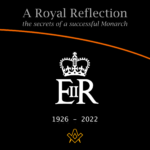 A Royal Reflection – the secrets of a successful Monarch On the death of Her Majesty Queen Elizabeth II, Craig Weightman, in a fitting tribute to an exemplar, recently departed, reflects on how the late Monarch's life demonstrated how we should all live every moment, as we serve others. A poignant reflection on a life that was resplendent in virtue, to the benefit of all, which is what Freemasonry attempts to teach us. |
 A Journey in Stone – Extracts of Wisdom p.8 More extracts of wisdom from Craig Weightman's book 'A Journey in Stone' – this month, we explore |
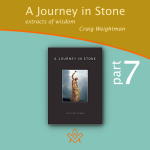 A Journey in Stone – Extracts of Wisdom p.7 More extracts of wisdom from Craig Weightman's book 'A Journey in Stone' – this month, we explore |
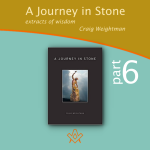 A Journey in Stone – Extracts of Wisdom p.6 More extracts of wisdom from Craig Weightman's book 'A Journey in Stone' – this month, we explore the Working Tools of the Third Degree. |
 A Journey in Stone – Extracts of Wisdom p.5 More extracts of wisdom from Craig Weightman's book 'A Journey in Stone' – this month, we explore the Working Tools of the Second Degree. |
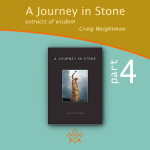 A Journey in Stone – Extracts of Wisdom p.4 The Working Tools of the First Degree – the twenty-four-inch gauge. This book collates masonic author and psychologist, Craig Weightman's collective wisdom and philosophy, taking you on a fascinating 'journey in stone'. |
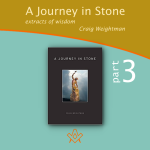 A Journey in Stone – Extracts of Wisdom p.3 This book collates masonic author and psychologist, Craig Weightman's collective wisdom and philosophy, taking you on a fascinating 'journey in stone'. |
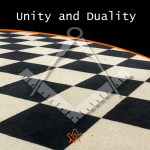 Craig continues his previous exploration into the 'hero's journey' through life's travails; this month we discover how within the stormy sea of battling opinion and confusion, there is an island called Freemasonry. |
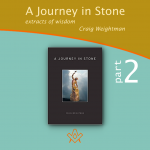 A Journey in Stone – Extracts of Wisdom p.2 This book collates masonic author and psychologist, Craig Weightman's collective wisdom and philosophy, taking you on a fascinating 'journey in stone'. |
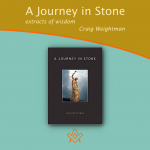 A Journey in Stone – Extracts of Wisdom p.1 For those who have enjoyed Craig Weightman's thought-provoking and inspiring monthly features, this book collates his collective wisdom and philosophy, taking you on a fascinating 'journey in stone'. |
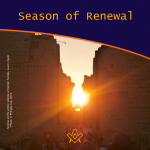 This spectacle takes place at the same time every year. Literally, the sun 'dies' for three days, then is reborn on the Christmas morning. |
 Coming to Terms with the Great War Within Ourselves Discover your 'shadow' - the black-and-white path to self-awareness - "A man who is possessed by his shadow is always standing in his own light and falling into his own traps...living below his own level." - Carl Jung |
 The Masonic Art of Being a Gentleman What defines the masonic art of being a gentleman; a chivalrous, courteous, or honourable man? |
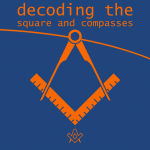 Decoding the Square and Compasses The square and compasses is the most famous symbol with which Freemasonry is identified. However, this is not just a logo that helps the organisation to stand out from the rest. |
 Each moment is a gift that you can make the most of. We can all do more; many of us do not live our lives to the full. |
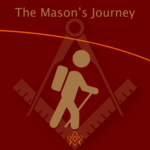 The hero’s journey can also be seen in the Masonic system; a candidate first considers embarking on the Masonic journey but wonders whether it is really for him |
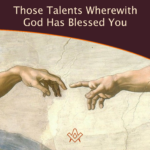 Those Talents Wherewith God Has Blessed You Incorporated in the charge to the initiate, has a lasting impression of what Freemasonry is all about. |
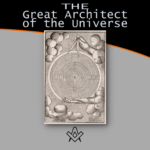 The Great Architect of the Universe When a candidate for 'Regular' Freemasonry is interviewed, prior to being admitted, he is always asked if he believes in a Supreme Being. |
masonic knowledge
to be a better citizen of the world
share the square with two brothers

click image to open email app on mobile device










